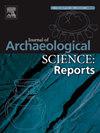经典玛雅城市的家务、手工艺和祭祀活动:坎库恩遗址(危地马拉,公元 650-800 年)燧石钻的功能分析
IF 1.5
2区 历史学
0 ARCHAEOLOGY
引用次数: 0
摘要
由于很难确定古典时期(公元 250-950 年)玛雅城市中的家务和手工艺活动,人们对中 美洲城市的性质和功能进行了大量的讨论。由于对占用空间进行了系统的清理,以及不利于保存易腐物品的条件,这些活动很少得到确认。为了确定出土区域的活动特征,我们对发掘过程中最常发现的石器进行了功能分析。我们的研究重点是坎库恩遗址(危地马拉),由于该遗址的年代较短,因此是确定该遗址活动空间分布的理想案例。我们的分析侧重于一种工具:燧石钻,这种工具在玛雅地区非常罕见,但在坎库恩市内却非常多。功能分析所选择的工具来自几种环境--家庭、公共场所、祭祀(墓葬)以及手工生产场所--目的是根据使用环境确定这些工具的地位差异。功能分析的结果表明,钻头的用途非常广泛。虽然这类工具可根据需要用于包括木材和陶器在内的各种材料,但有时也用于非常专门的活动,如加工牙齿。对祭祀环境中的工具进行的分析表明,这些工具的出现可能会增加祭品的价值。这项分析使我们能够初步了解坎昆城的手工艺、家务和祭祀活动的组织情况。本文章由计算机程序翻译,如有差异,请以英文原文为准。
Domestic, artisanal, and ritual activities in a classic Maya city: Functional analysis of flint drills from the Cancuén site (AD 650–800, Guatemala)
The difficulty in determining the domestic and craft activities that took place in Maya cities during the Classic period (250–950 CE) has resulted in much debate on the nature and functioning of Mesoamerican cities. These activities are rarely identified because of the systematic cleaning of the occupied spaces that occurred and the unfavourable conditions for the preservation of perishable objects. To characterize the activities that took place in the areas uncovered, we carried out a functional analysis of the lithic tools most frequently found during excavations. Our study focused on the site of Cancuén (Guatemala), which because of its short chronology, is an ideal case for determining the spatial distribution of the activities that took place there. Our analysis focused on one type of tool: flint drills, rare in the Maya region but abundant within the city of Cancuén. The tools selected for the functional analysis come from several contexts–domestic, public, ritual (burial) as well as places of artisanal production – in order to determine the difference in status of these objects according to their contexts of use. The results of the functional analysis show that drills were used for a wide variety of tasks. While this type of tool was used as needed for various materials, including wood and pottery, it was sometimes used for very specialized activities, such as the working of teeth. The analysis of tools from ritual contexts suggests that their presence could have added value to the offering. This analysis enables us to provide the first elements of understanding of the organization of artisanal, domestic, and ritual activities in the city of Cancuén.
求助全文
通过发布文献求助,成功后即可免费获取论文全文。
去求助
来源期刊

Journal of Archaeological Science-Reports
ARCHAEOLOGY-
CiteScore
3.10
自引率
12.50%
发文量
405
期刊介绍:
Journal of Archaeological Science: Reports is aimed at archaeologists and scientists engaged with the application of scientific techniques and methodologies to all areas of archaeology. The journal focuses on the results of the application of scientific methods to archaeological problems and debates. It will provide a forum for reviews and scientific debate of issues in scientific archaeology and their impact in the wider subject. Journal of Archaeological Science: Reports will publish papers of excellent archaeological science, with regional or wider interest. This will include case studies, reviews and short papers where an established scientific technique sheds light on archaeological questions and debates.
 求助内容:
求助内容: 应助结果提醒方式:
应助结果提醒方式:


